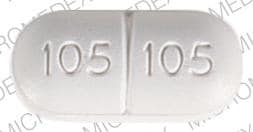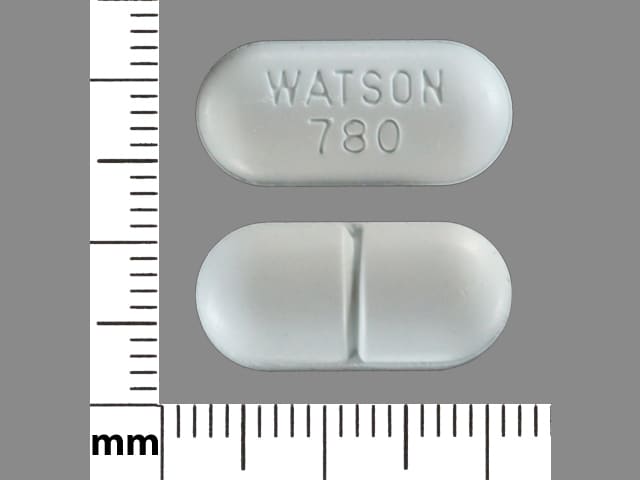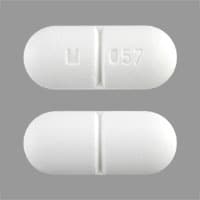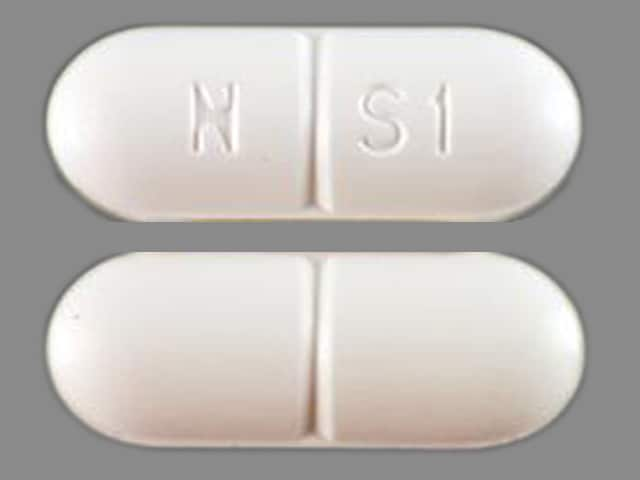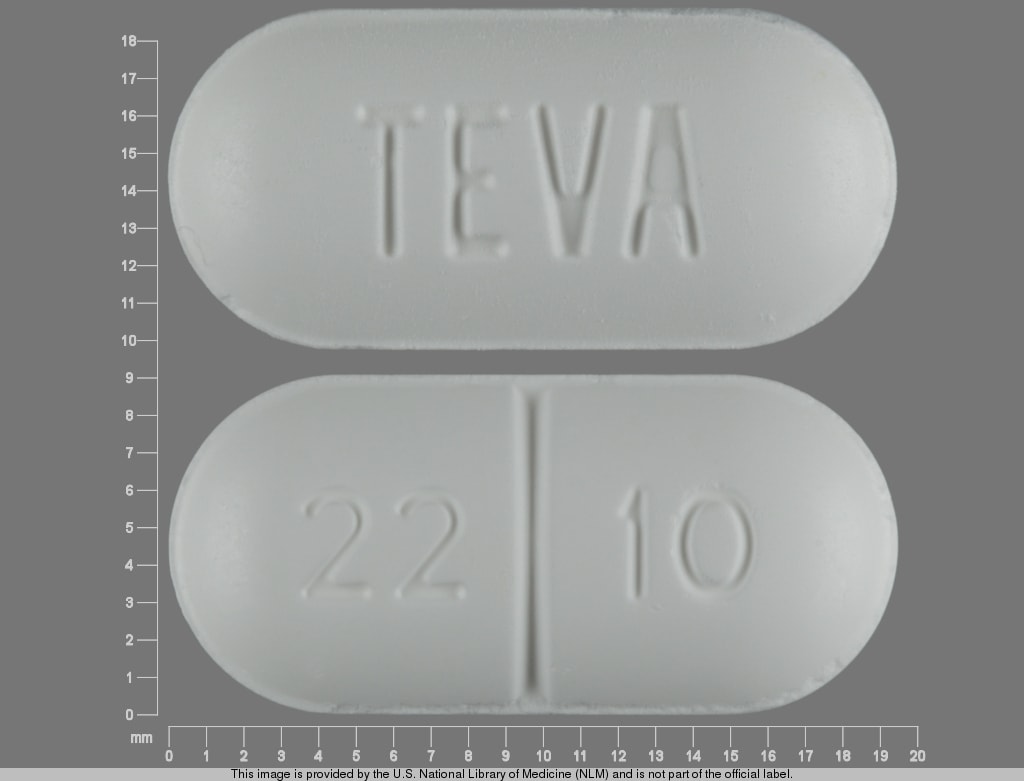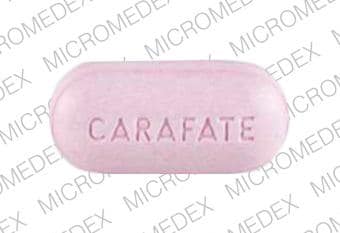Dosage Forms
Excipient information presented when available (limited, particularly for generics); consult specific product labeling.
Suspension, Oral:
Carafate: 1 g/10 mL (420 mL) [contains fd&c red #40, methylparaben, sorbitol; cherry flavor]
Generic: 1 g/10 mL (420 mL)
Tablet, Oral:
Carafate: 1 g [scored; contains fd&c blue #1 aluminum lake]
Generic: 1 g
Pharmacology
Mechanism of Action
Forms a complex by binding with positively charged proteins in exudates, forming a viscous paste-like, adhesive substance. This selectively forms a protective coating that acts locally to protect the gastric lining against peptic acid, pepsin, and bile salts.
Pharmacokinetics/Pharmacodynamics
Absorption
Oral: Minimal from GI tract
Distribution
Acts locally at ulcer sites; unbound in the GI tract to aluminum and sucrose octasulfate.
Metabolism
None
Excretion
Primarily urine (small amounts of sulfated disaccharide)
Onset of Action
Paste formation and ulcer adhesion: 1 to 2 hours; acid neutralizing capacity: ~14 to 16 mEq/1 g dose of sucralfate
Use: Labeled Indications
Duodenal ulcer: Short-term (≤8 weeks) treatment of active duodenal ulcers; maintenance therapy for duodenal ulcers (tablets only)
Contraindications
Hypersensitivity to sucralfate or any component of the formulation
Dosage and Administration
Dosing: Adult
Duodenal ulcer: Oral:
Active duodenal ulcer: Suspension, tablet: Initial: 1 g 4 times daily for 4 to 8 weeks
Maintenance therapy: Tablet: 1 g twice daily
Dosing: Geriatric
Refer to adult dosing. Use with caution; initiate at low end of dosage range.
Dosing: Pediatric
Peptic ulcer disease, adjunct therapy: Limited data available: Infants, Children, and Adolescents: Oral: 40 to 80 mg/kg/day divided every 6 hours. Maximum dose: 1,000 mg/dose (Kliegman 2016; Nelson 1996)
Esophagitis: Limited data available (Arguelles-Martin 1989):
Infants ≥3 months and Children <6 years: Oral: 500 mg/dose four times daily
Children ≥6 years: Oral: 1,000 mg/dose four times daily
Note: Dosing from a prospective trial of 75 patients (age range: 3 months to 13 years) who received sucralfate tablets (n=25), sucralfate suspension (n=25), or cimetidine (n=25) for reflux esophagitis. At the end of 8 weeks, 68% of patients receiving sucralfate tablet, 92% of patients receiving sucralfate suspension, and 79% of patients receiving cimetidine were asymptomatic. Sucralfate was well tolerated.
Extemporaneously Prepared
Note: Commercial oral suspension is available (100 mg/mL).
A 66.67 mg/mL oral suspension may be made with tablets. Add eight 1 g tablets to a 120 mL glass bottle. Add 40 mL of SWFI and allow tablets to dissolve (~2 minutes). Add 40 mL of sorbitol 70% solution and shake well. In a separate container, dissolve 2 flavor packets (Vari-Flavors; Ross Laboratories) with 10 mL of water, and swirl until dissolved then add to drug mixture. Add SWFI to make 120 mL. Label "shake well" and "refrigerate". Use within 2 weeks.
Ferraro JM. Sucralfate suspension for mouth ulcers. Drug Intell Clin Pharm. 1985;19(6):480.3839180
Administration
Oral: Administer on an empty stomach. Shake suspension well before use. Do not administer antacids within 30 minutes of administration of sucralfate. In general, separate administration of other oral medications and sucralfate by at least 2 hours; consult drug interactions database for additional information.
Dietary Considerations
Take with water on an empty stomach.
Storage
Suspension: Store at 20°C to 25°C (68°F to 77°F); do not freeze.
Tablet: Store at 15°C to 30°C (59°F to 86°F).
Sucralfate Images
Drug Interactions
Baloxavir Marboxil: Polyvalent Cation Containing Products may decrease the serum concentration of Baloxavir Marboxil. Avoid combination
Bictegravir: Polyvalent Cation Containing Products may decrease the serum concentration of Bictegravir. Management: Administer bictegravir under fasting conditions at least 2 hours before or 6 hours after polyvalent cation containing products. Coadministration of bictegravir with or 2 hours after most polyvalent cation products is not recommended. Consider therapy modification
Bisphosphonate Derivatives: Polyvalent Cation Containing Products may decrease the serum concentration of Bisphosphonate Derivatives. Management: Avoid administration of oral medications containing polyvalent cations within: 2 hours before or after tiludronate/clodronate/etidronate; 60 minutes after oral ibandronate; or 30 minutes after alendronate/risedronate. Exceptions: Pamidronate; Zoledronic Acid. Consider therapy modification
Cholic Acid: Sucralfate may decrease the absorption of Cholic Acid. Consider therapy modification
Deferiprone: Polyvalent Cation Containing Products may decrease the serum concentration of Deferiprone. Management: Separate administration of deferiprone and oral medications or supplements that contain polyvalent cations by at least 4 hours. Consider therapy modification
Digoxin: Sucralfate may decrease the serum concentration of Digoxin. Specifically, sucralfate may decrease the absorption of digoxin. Management: Administer digoxin at least 2 hours before sucralfate. Consider therapy modification
Dolutegravir: Sucralfate may decrease the serum concentration of Dolutegravir. Management: Administer dolutegravir at least 2 hours before or 6 hours after sucralfate. Administer the dolutegravir/rilpivirine combination product at least 4 hours before or 6 hours after sucralfate. Consider therapy modification
Eltrombopag: Polyvalent Cation Containing Products may decrease the serum concentration of Eltrombopag. Management: Administer eltrombopag at least 2 hours before or 4 hours after oral administration of any polyvalent cation containing product. Consider therapy modification
Furosemide: Sucralfate may decrease the serum concentration of Furosemide. Sucralfate may impair the absorption of furosemide. Management: Avoid concomitant oral administration of furosemide and sucralfate. Separate administration by at least 2 hours. Does not apply to parenterally administered furosemide. Consider therapy modification
Ketoconazole (Systemic): Sucralfate may decrease the serum concentration of Ketoconazole (Systemic). Monitor therapy
Levothyroxine: Sucralfate may decrease the serum concentration of Levothyroxine. Monitor therapy
Multivitamins/Fluoride (with ADE): May increase the serum concentration of Sucralfate. Specifically, the absorption of aluminum may be increased. Sucralfate may decrease the serum concentration of Multivitamins/Fluoride (with ADE). More specifically, sucralfate may impair the absorption of fluoride. Management: Avoid administration of aluminum-containing products, such as sucralfate, within at least 1-2 hours of fluoride administration. In patients with severe renal dysfunction, consider avoiding this combination altogether. Consider therapy modification
Multivitamins/Minerals (with ADEK, Folate, Iron): May increase the serum concentration of Sucralfate. Specifically, the absorption of aluminum from sucralfate may be increased, leading to an increase in the serum aluminum concentration. Avoid combination
PenicillAMINE: Polyvalent Cation Containing Products may decrease the serum concentration of PenicillAMINE. Management: Separate the administration of penicillamine and oral polyvalent cation containing products by at least 1 hour. Consider therapy modification
Phosphate Supplements: Sucralfate may decrease the absorption of Phosphate Supplements. Management: This applies only to oral phosphate administration. Administering oral phosphate supplements at least 2 hours before sucralfate may reduce the significance of the interaction. Exceptions: Sodium Glycerophosphate Pentahydrate. Consider therapy modification
QuiNIDine: Sucralfate may decrease the serum concentration of QuiNIDine. Specifically, sucralfate may decrease the absorption of quinidine. Management: Administer quinidine at least 2 hours before sucralfate. Consider therapy modification
Quinolones: Sucralfate may decrease the serum concentration of Quinolones. Management: Avoid concurrent administration of quinolones and sucralfate to minimize the impact of this interaction. Recommendations for optimal dose separation vary by specific quinolone. Exceptions: LevoFLOXacin (Oral Inhalation). Consider therapy modification
Raltegravir: Polyvalent Cation Containing Products may decrease the serum concentration of Raltegravir. Management: Administer raltegravir 2 hours before or 6 hours after administration of the polyvalent cations. Dose separation may not adequately minimize the significance of this interaction. Consider therapy modification
Sulpiride: Sucralfate may decrease the serum concentration of Sulpiride. Management: Separate administration of sucralfate and sulpiride by at least 2 hours in order to minimize the impact of sucralfate on sulpiride absorption. Consider therapy modification
Tetracyclines: Sucralfate may decrease the absorption of Tetracyclines. Management: Administer most tetracycline derivatives at least 2 hours prior to sucralfate in order to minimize the impact of this interaction. Administer oral omadacycline 4 hours prior to sucralfate. Exceptions: Eravacycline. Consider therapy modification
Trientine: Polyvalent Cation Containing Products may decrease the serum concentration of Trientine. Management: Avoid concomitant administration of trientine and oral products that contain polyvalent cations. If oral iron supplements are required, separate the administration by 2 hours. If other oral polyvalent cations are needed, separate administration by 1 hour. Consider therapy modification
Vitamin D Analogs: May increase the serum concentration of Sucralfate. Specifically, the absorption of aluminum from sucralfate may be increased, leading to an increase in the serum aluminum concentration. Avoid combination
Vitamin K Antagonists (eg, warfarin): Sucralfate may diminish the anticoagulant effect of Vitamin K Antagonists. Sucralfate may decrease the serum concentration of Vitamin K Antagonists. Specifically, sucralfate may decrease the absorption of Vitamin K Antagonists. Management: Administer vitamin K antagonists at least 2 hours before sucralfate. Consider therapy modification
Adverse Reactions
1% to 10%: Gastrointestinal: Constipation (2%)
<1%, postmarketing, and/or case reports: Anaphylaxis, back pain, bezoar formation, bronchospasm, diarrhea, dizziness, drowsiness, dyspepsia, facial edema, flatulence, gastric distress, headache, hyperglycemia, hypersensitivity reaction, insomnia, laryngeal edema, mouth edema, nausea, pharyngeal edema, pruritus, pulmonary edema, skin rash, vertigo, vomiting, xerostomia
Warnings/Precautions
Disease-related concerns:
- Diabetes: Hyperglycemia has been reported with sucralfate suspension in patients with diabetes; monitor glycemia closely; adjustment of antidiabetic treatment may be necessary.
- Duodenal ulceration: Because sucralfate acts locally at the ulcer, successful therapy with sucralfate should not be expected to alter the posthealing frequency of recurrence or the severity of duodenal ulceration.
- Renal impairment: Use with caution in patients with chronic renal failure; sucralfate is an aluminum complex, small amounts of aluminum are absorbed following oral administration. Excretion of aluminum may be decreased in patients with chronic renal failure or on dialysis, increasing the risk of aluminum accumulation and toxicity (eg, aluminum osteodystrophy, osteomalacia, and encephalopathy).
Concurrent drug therapy issues:
- Drug-drug interactions: Potentially significant interactions may exist, requiring dose or frequency adjustment, additional monitoring, and/or selection of alternative therapy. Consult drug interactions database for more detailed information.
Dosage form specific issues:
- Tablets: Use with caution in patients with conditions that may impair swallowing (eg, recent or prolonged intubation, tracheostomy, dysphagia, history of aspiration) or other conditions that may alter gag/cough reflexes, or diminish oropharyngeal coordination or motility; aspiration with accompanying respiratory complications has been reported.
Other warnings/precautions:
- Administration: Administer sucralfate by oral route only; fatal complications, including cerebral and pulmonary emboli, have been reported with inadvertent IV administration of sucralfate.
Monitoring Parameters
Blood glucose levels (in diabetic patients receiving oral suspension).
Pregnancy
Pregnancy Considerations
Sucralfate is only minimally absorbed following oral administration. Based on available data, sucralfate does not appear to increase the risk of adverse fetal events when used during the first trimester. Sucralfate may be used for the treatment of duodenal ulcer or reflux in pregnancy (Cappell 2003; Dağlı 2017; Richter 2007).
Patient Education
What is this drug used for?
- It is used to treat GI (gastrointestinal) ulcers.
Frequently reported side effects of this drug
- Constipation
Other side effects of this drug: Talk with your doctor right away if you have any of these signs of:
- High blood sugar like confusion, fatigue, increased thirst, increased hunger, passing a lot of urine, flushing, fast breathing, or breath that smells like fruit.
- Signs of a significant reaction like wheezing; chest tightness; fever; itching; bad cough; blue skin color; seizures; or swelling of face, lips, tongue, or throat.
Note: This is not a comprehensive list of all side effects. Talk to your doctor if you have questions.
Consumer Information Use and Disclaimer: This information should not be used to decide whether or not to take this medicine or any other medicine. Only the healthcare provider has the knowledge and training to decide which medicines are right for a specific patient. This information does not endorse any medicine as safe, effective, or approved for treating any patient or health condition. This is only a brief summary of general information about this medicine. It does NOT include all information about the possible uses, directions, warnings, precautions, interactions, adverse effects, or risks that may apply to this medicine. This information is not specific medical advice and does not replace information you receive from the healthcare provider. You must talk with the healthcare provider for complete information about the risks and benefits of using this medicine.
